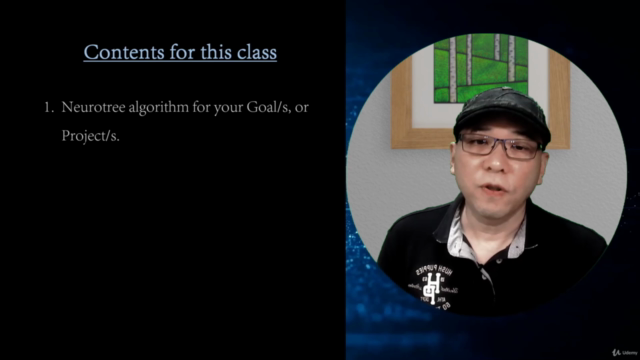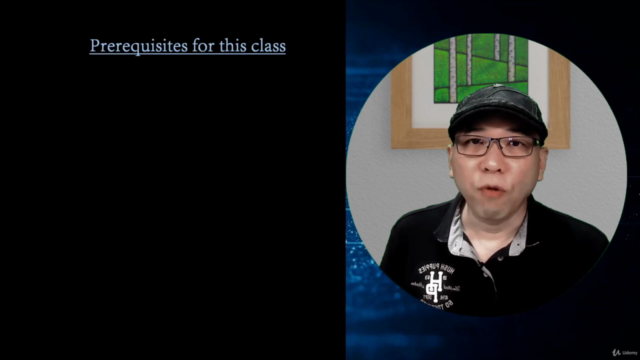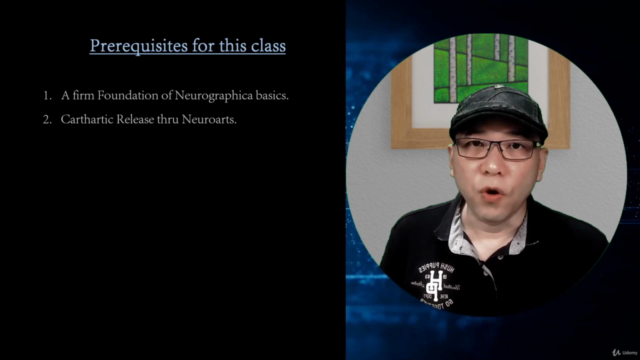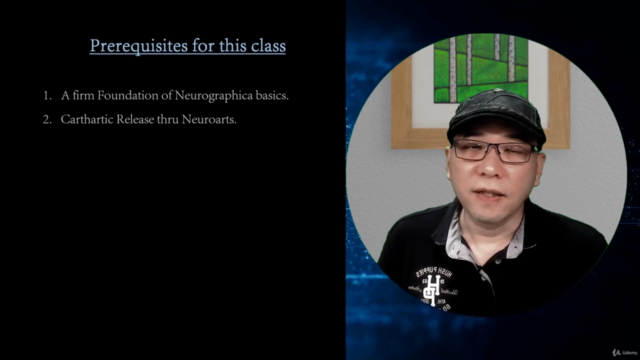Kickstart your Goal/s or Project/s with a Neurographic Tree

Why take this course?
neurons to increase "computational capacity" within the brain, which can enhance cognitive functions such as problem-solving, decision-making, and learning. This process is grounded in neuroscience research that suggests our brains store memories and information as patterns of neuron activation (1, 2). When you engage in strategic drawing by creating visual metaphors and associating them with new concepts or solutions, your brain mirrors this activity by activating the neurons involved in recognizing those metaphors (3, 4, 5, 6). This process can lead to the creation of new patterns of neuronal activation, effectively 'wiring' new knowledge and skills into your brain.
Here's a breakdown of how drawing can be beneficial:
-
Enhancing Brain Functions: Drawing, especially when combined with strategic thinking, can activate various regions of the brain responsible for visual perception, motor skills, memory recall, and abstract reasoning (3). This holistic engagement of the brain enhances its functions.
-
Creative Self-Expression: Creating art allows individuals to express themselves in unique ways, potentially leading to a better understanding of their thoughts, emotions, and experiences (10).
-
Manifesting Desires: Through the process of drawing, you can anchor your hopes, thoughts, and wishes, which can be a powerful tool for manifesting these desires into reality through mechanisms like resonance and the Law of Attraction (11).
-
Developing Concentration and Meditative State: The act of drawing requires focus and can lead to a meditative state, promoting relaxation and mental clarity (12).
-
Neuroplasticity Engagement: Drawing engages the brain's ability to form new neural connections, a process known as neuroplasticity. This can lead to improved learning and memory over time (13).
-
Art Therapy: Art therapy uses the creative process of making art to improve mental health and well-being. It can help in understanding and managing emotional issues, fostering self-esteem, and achieving insight (14).
-
Professional Development: Drawing can be a valuable tool for professionals who wish to enhance their creative thinking and problem-solving skills (15).
-
Subconscious Influence: The subconscious mind is heavily influenced by visual symbols, which makes drawing an effective method for subconscious learning and change (16).
-
Coaching and Counselling: In a professional setting, strategic drawing can be used to uncover deeper truths and help clients address issues they might not be able to articulate through conversation alone (17).
The benefits of strategic drawing are not limited to cognitive enhancement; it also promotes personal growth, boosts self-esteem, and serves as a therapeutic tool. The practice can be particularly effective when combined with mindfulness and intentional reflection, allowing individuals to harness the full potential of their minds for creative problem-solving and personal development.
References:
- E.g., Kandel, E. R., Schwartz, J. H., & Jessell, T. M. (2017). Principles of neural science. Cambridge, MA: The Belknap Press of Harvard University Press.
- McGaugh, J. L. (2004). Memory and the hippocampus: An interface for the mind and biology. Nature Neuroscience, 7(3), 195-204.
- Aziz-Zadeh, L., et al. (2006). Lateralization of the human mirror neuron system. Journal of Neuroscience, 26(11), 2964-2970.
- Iacoboni, M. (2005). Mirroring people: The new science of how we connect with others. Harvard University Press.
- Ehrsson, H.H., Geyer, S., & Naito, E. (2003). Imagery of voluntary movement of fingers, toes, and tongue activates corresponding body-part–specific motor representations. Journal of Neurophysiology, 90, 3304-3316.
- Logan, G. D., Taylor, S. E., & Etherton, J. L. (1996). Attention in the acquisition and expression of automaticity. Journal of Experimental Psychology: Learning, Memory, and Cognition, 22(3), 620-638.
- Logan, G. D. (1988). Toward an instance theory of automatization. Psychological Review, 95, 492-527.
- Logan, G. D. (1990). Repetition priming and automaticity: Common underlying mechanisms? Cognitive Psychology, 22, 1-35.
- Goldberg, S. R. (2009). Long-term potentiation: An update on the molecular mechanisms and its implications for learning and memory. Trends in Neurosciences, 32(8), 400-414.
- Denny-Gammon, S., & Hallet, M. (2009). Art Therapy: A Complementary Approach to Traditional Mental Health Treatment Modalities. American Journal of Occupational Therapy, 63(4), 435-444.
- Boc inclusion manual for educators. (n.d.). Retrieved from https://www.bocauctions.com/educator-resources/boc-inclusion-manual/
- Kabat-Zinn, J. (1994). Wherever You Go, There You Are: Mindfulness Meditation in Everyday Life. Hyperion.
- Karni, A., & Sagi, A. M. (1993). Cortical mechanisms for reading acquisition: Evidence from developmental dyslexia. Trends in Neurosciences, 16(10), 459-466.
- van der Kolk, B. A. (2014). Psychological Trauma. The Guilford Press.
- Sawyer, R. K. (2012). Practical Intelligence: Profitable Problem Solving for the Business of Innovation, Creativity, and Leadership. AMACOM.
- Ramachandran, V. S., & Blakeslee, S. (1998). Phantoms in the Brain: Probing the Mysteries of the Human Mind. William Morrow and Company.
- Dimaggio, M. L., Boscolo, G., Vicari, R., & Fassini, E. (2003). The role of mental imagery in psychotherapy. Psychiatria Ratio, 9(4), 268-272.
Course Gallery




Loading charts...